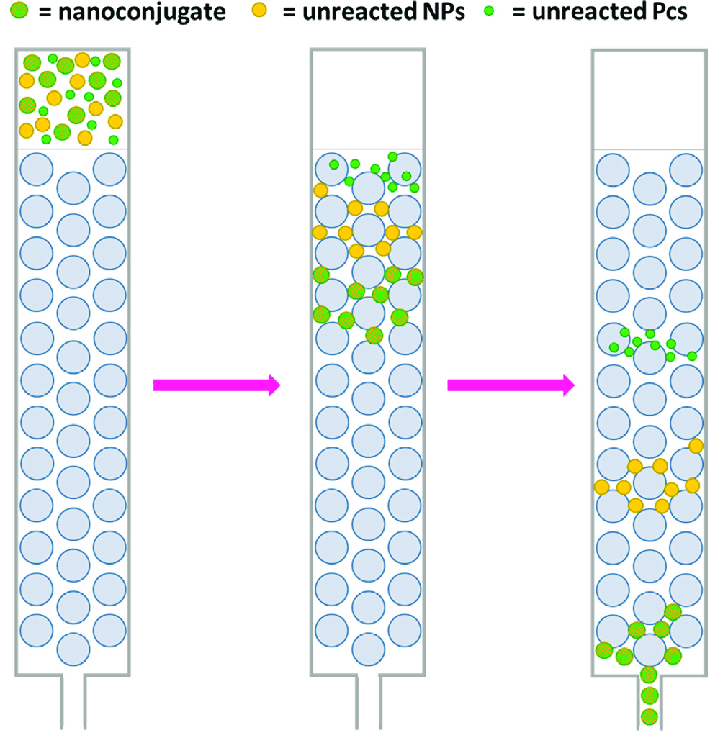Size exclusion chromatography

The core principle of size exclusion chromatography (SEC) is to create a high gradient of diffusion coefficients for particles of different sizes. Small particles will diffuse slower than bigger particles (contrary to brownian diffusion).
You make a column with particles that induce different diffusion coefficients and pass the sample through it (by gravity). Effectively, you'll separate different sizes of particles in the time-domain (bigger particles come out first). See also limits of time-based separation methods.
It is related to High Performance Liquid Chromatography in the spirit of the method. The crucial difference is the use of porous nanoparticles to induce diffusion differences instead of affinity differences.
iZon sells SEC systems with automated collection revolvers.
Cell guidance systems sells the exo-spin1 system, which is essentially the same as the iZon's, but columns must be centrifuged. I don't know the difference between both systems, or whether it is a matter of speeding up the process. The price per column (Feb 2021) is around €15.
I assume the same principle would work for charged particles under an electrical field, for example. Perhaps it is not so different from what gel electrophoresis does, but without involving a gel and therefore having a much cleaner resulting sample?
I wonder why the name chromatography if it does not involve color at all. Perhaps historical reasons?
-
https://www.cellgs.com/items/exosomes/exospin.html ↩
Backlinks
These are the other notes that link to this one.
